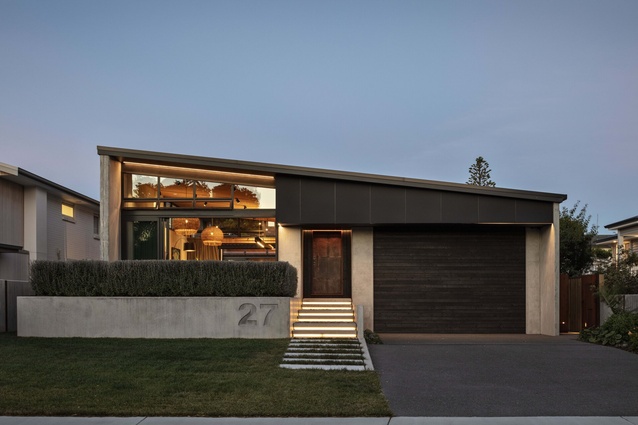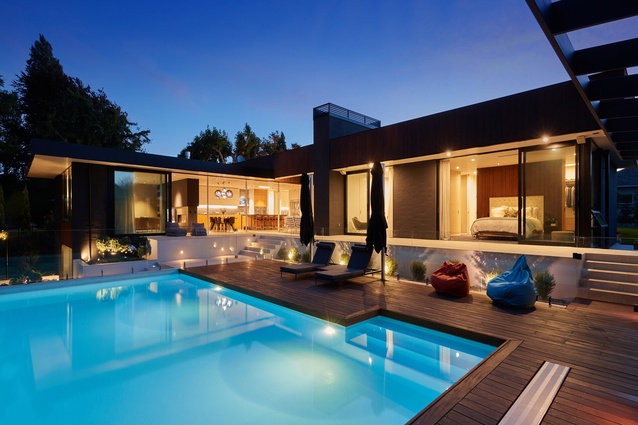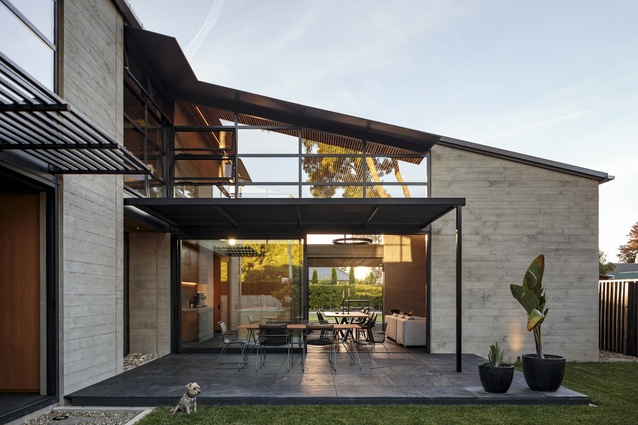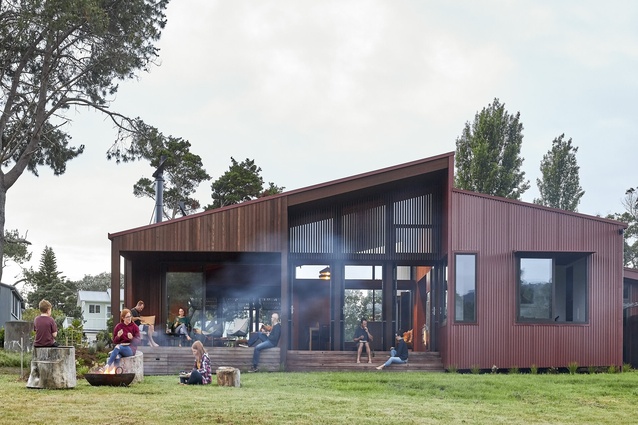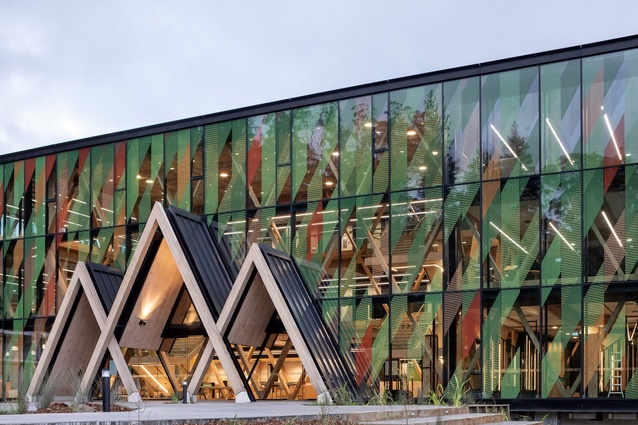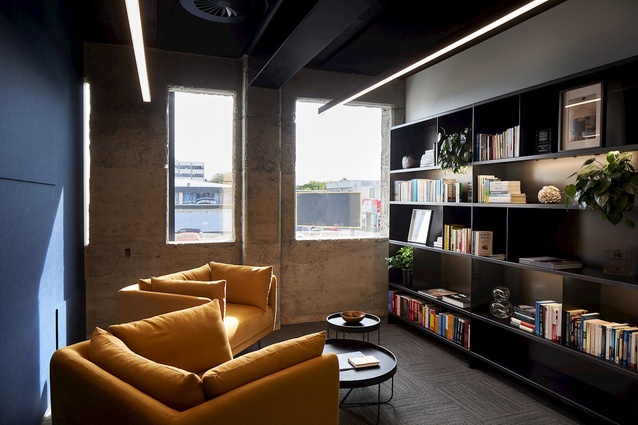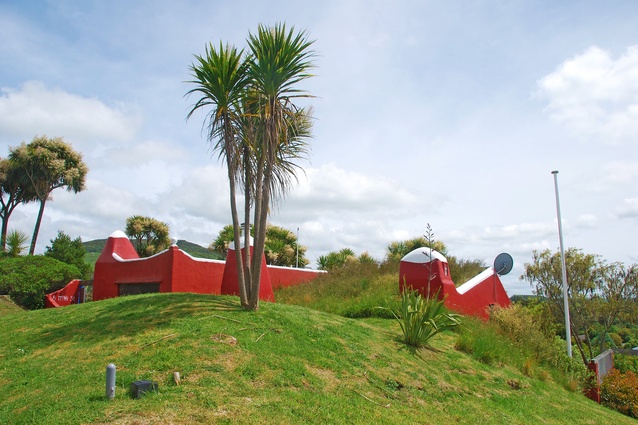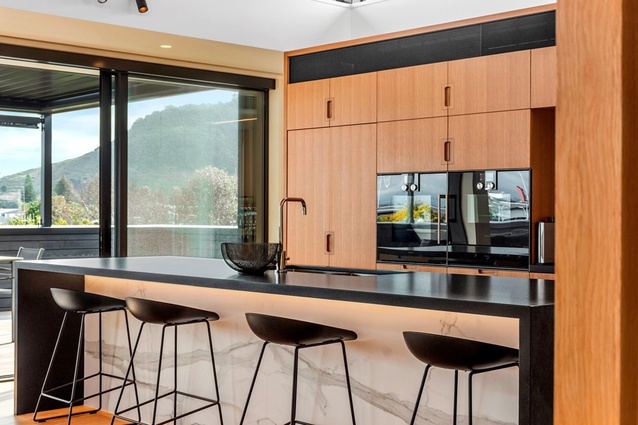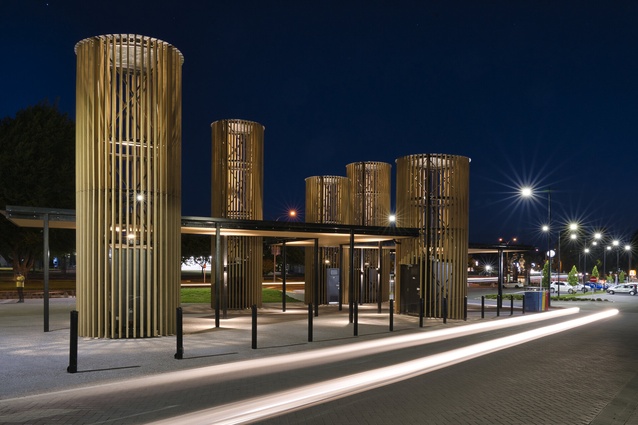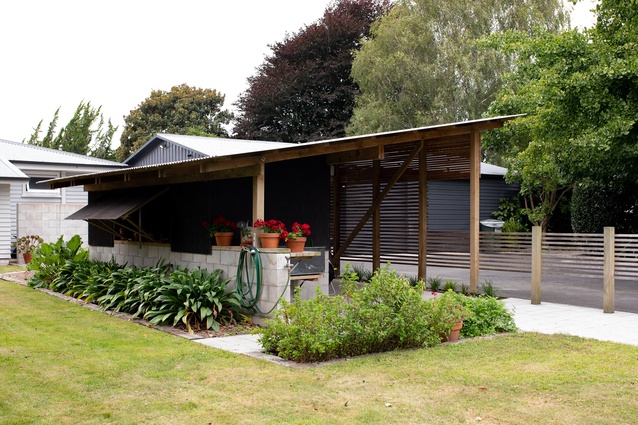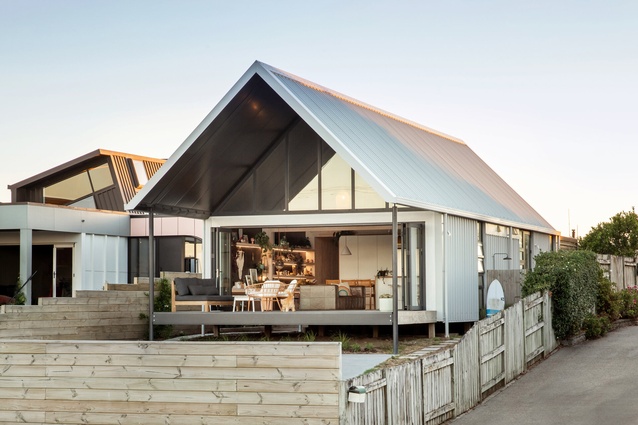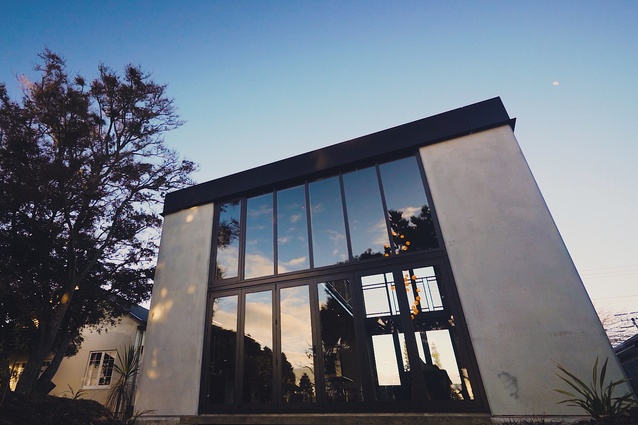Winners revealed: 2021 Waikato/Bay of Plenty Architecture Awards
With last year‘s ceremonies taking place online, the Te Kāhui Whaihanga New Zealand Institute of Architects (NZIA) Local Awards have returned to an in-person format for 2021, with the first set of prizes handed out on the University of Waikato’s Tauranga campus.
Convened by Camden Cummings, of Cummings Studio Architects, the jury for the Waikato and Bay of Plenty regions was made up of Henri Sayes of Sayes Studio, Roger Course of Roger Course Architect and Megan Lyon, RAMP Festival Director at the Waikato Institute of Technology.
“We were encouraged to see a lot more projects being built outside of the main centres, particularly in the Coromandel” Cummings remarked, who went on to note a recurring theme of sustainability. “It’s exciting to see some experimentation with new structural panel prefabrication ideas in efforts to design more efficient buildings.”
Judi Keith-Brown, NZIA president, noted that it had been a difficult year for all, but she was encouraged to see the Local Awards celebrating excellence in architecture. “The connections our members have with their amazing clients, and the things they’ve achieved together, have made this year a really special one,” she said.
See the full line-up of winners below with jury citations.
Housing
Concrete Bungalow by Architecture Bureau

A handsome elevation and dignified street presence conceal an artful gradient from public to private within this suburban holiday home. Section is cleverly used to steal long views, and considered window placements maintain privacy while also bringing in high-quality natural light. Careful consideration of thermal mass and cross ventilation to manage comfort, combined with a sensitive incorporation of the clients’ craft into the structure of the house, creates a home that is comfortable for a couple but able to take a crowd.
Vera House by Boon
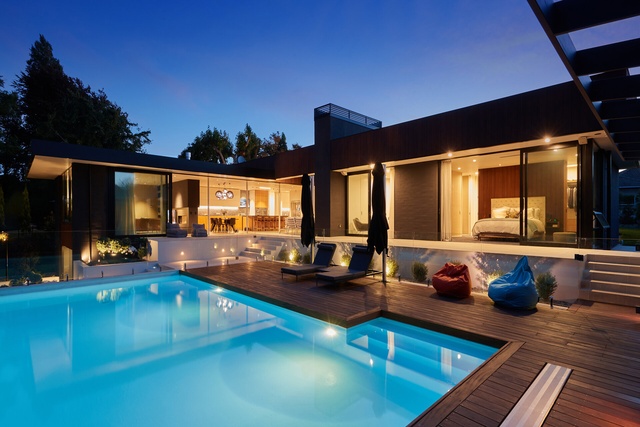
A busy, semi-commercial suburban street makes a dramatic entry point to this calm family home with a slick modernist design, including dual living wings and an infinity pool, that sits handsomely within its context. This home demonstrates how well multiple generations can live together in a modern situation, particularly thanks to an underground studio that opens out onto a roofed outdoor room, which itself overlooks Edgecumbe Park and the Waikato River. The quality of each space in Vera House is demonstrated by the ways in which its occupants are living to the fullest in all aspects of their new home.
Raglan Rest by Edwards White Architects

This country house admirably meets the client’s request for “a house of clean lines and open spaces that capitalises on the amazing views”. Situated to provide shelter from the prevailing winds and to take advantage of the outlook over Raglan township, harbour and the Tasman Sea, the design response is a sheltering, low-slung, L-shape combined with generous internal spaces. The entrance cantilever and wide living area overhangs provide a sculptural sense of shelter in this “big landscape.”
Hamilton Family Home by Mercer and Mercer Architects
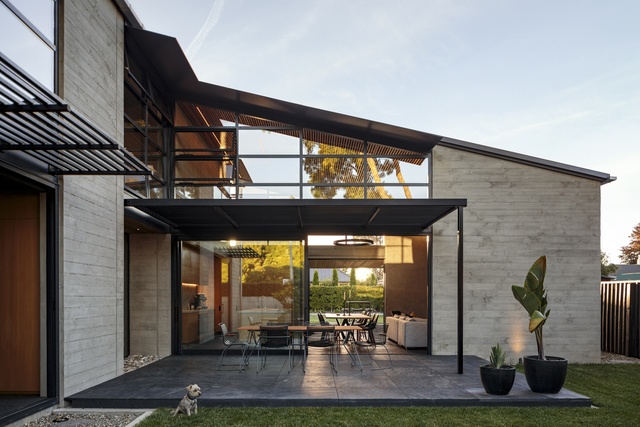
Effortlessly arranged around a highly resolved plan, this house is proof of the architects’ deep consideration and curiosity for how it may adapt over time, and is a finely crafted home for living in. A refined palette of materials balances industrial finishes with rhythmic timber, and showcases not only a material sophistication but a deft understanding of light and acoustics; it’s a sensory masterclass. A complex brief is solved with a simple hierarchy of forms, hidden circulation, and a high level of control.
Waipapa by Strachan Group Architects

This home speaks to the vernacular of its surroundings, with scoria-red corrugated iron and walnut-stained cedar cladding recalling the classic Kiwi farm shed. The house nestles into its location next to the Pungapunga river and responds sympathetically to the landscape beyond. Everything is considered, from exceptional detailing to spaces that are both functional and inviting; from multi-use bedrooms to an open-plan entertaining area. Outdoor rooms with screen actuators mimic the ritualistic aspects of camping while retaining access to the comforts of modern living.
Hill to Horizon House by Studio Brick Architects and Lloyd Hartley Architects in association

Cleverly modelled with a mannered response to the surrounding neighbourhood, this holiday house fits easily into its rural, coastal setting. The stained cedar cladding changes colour with the light, lending a mutable versatility to the exterior. The well-appointed and comfortable interior and outdoor living spaces ably cater for a couple or a holiday crowd. The quality of the bathrooms is particularly worthy of mention. Both restful and lively, this is a house of many moods.
Pipi House by Studio2 Architects
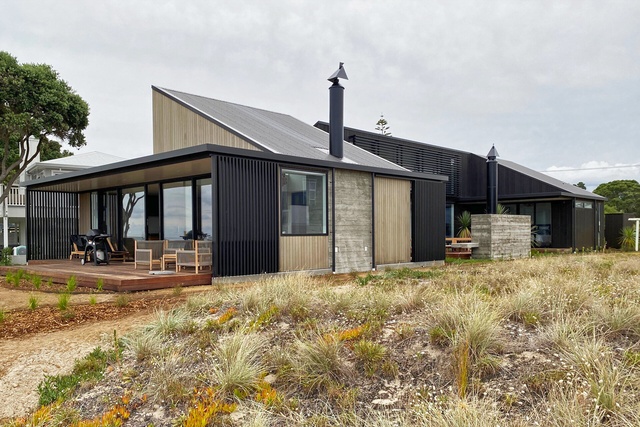
Low, lean and linked by a series of outdoor spaces and courtyards, this holiday home is a considered exercise in scale and appropriateness. The design provides varying levels of enclosure, exposure to the elements, and connection to the wider beachside fabric. Simple, formal moves in section create contrast in light and volume along the journey from the street to the beach. These manipulations of geometry result in a beach house that is both familiar and surprising, and that stays true to the essence of a bach.
Housing – Alterations and Additions
Blackwood Lodge by Brendon Gordon Architects
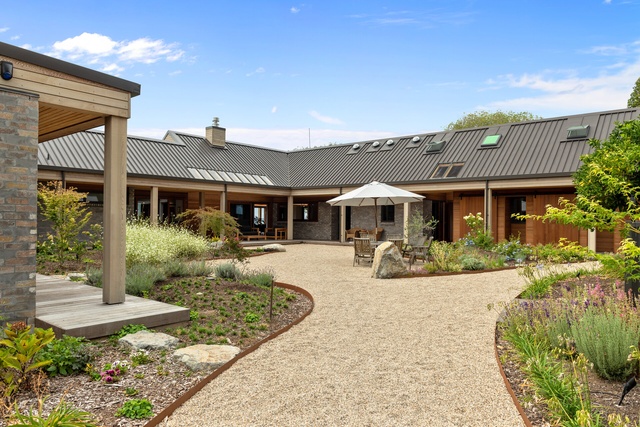
Enviably positioned on a waterfront section at Te Puna in Tauranga, with views out to Mt Maunganui, Blackwood Lodge takes its cues from its 1970s predecessor. It has been extensively reconfigured and rebuilt during a meticulous three-year transformation. The owners felled the on-site blackwood and made its timber into a feature, especially in the impressive kitchen area, which boasts a bespoke laminated kitchen island. A high level of connectivity between the home and its substantial orchard and garden is further enhanced by the housed pool, which recedes into the landscape.
Commercial Architecture
SCION Innovation Hub – Te Whare Nui o Tuteata by RTA Studio and Irving Smith Architects

Innovation creates artifact in this robust response to a complex masterplan brief. Superstructure and tectonics conform to play with scale and occupation in a masterclass of progressive timber technology. A simple horseshoe plan contrasts well with a visually rich skin to create a welcoming and warm environment. Visual connections allow easy navigation and use of the space while creating a sociable and contemporary work environment. This building is an asset to the Scion campus, and creates a welcoming arrival and public interface that combines technology with culture in a cohesive and well-assembled building.
Resene Colour Award winner
A reflection of the environment in which it finds itself, this building speaks back to its context through the use of colour. Surrounded by exotic deciduous trees which colour and fall during the change of seasons, this building references autumnal colours through the façade glazed fritting. Varied densities of fritting are used as solar regulators, depending on the façade’s relationship with the floors inside.
Urban HQ by Edwards White Architects

Occupying a prominent corner of Hamilton’s CBD, Urban HQ shows us that the architects’ manifesto for intelligent renewal of Hamilton’s urban fabric continues with gusto. Denying the condemnation of a disused 1950s building to mere landfill, the architect has sustainably retained the existing structure and deftly cloaked it in a new performance-oriented skin. The existing building is acknowledged by way of an exposed concrete structure, which is contrasted by clean, modern lines to heighten the appreciation of both. This modern, future-proofed office building is a delight in its combination of memory and function.
Enduring Architecture
Former Putāruru Post Office (1970) by Ministry of Works – Fergus Sheppard
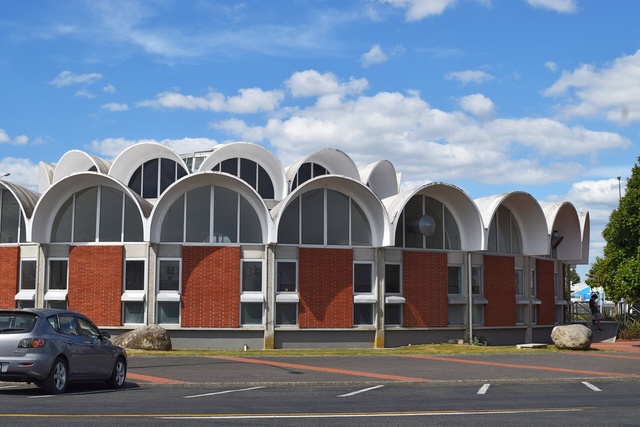
An iconic building in the centre of Putāruru, the Putāruru Post Office is a beacon of modernist architecture in New Zealand. Inspired by the Palazetto dello Sport in Rome, this once civic building embodies a bold and innovative approach to architecture with its vaulted arches and radial floor plan. Already listed as an historic building in the South Waikato District Plan, this ode to modernism is a celebrated example of how architecture can create and shape public space and be treasured by a small regional community.
Omori House Earth Shelter (1987) by WATT Architects
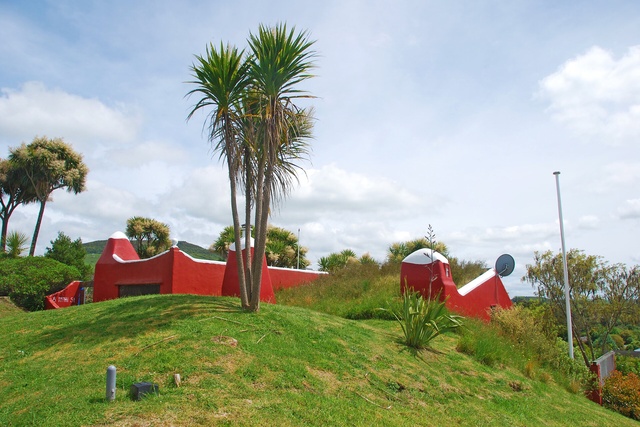
The architect’s own holiday home, built in 1987, Omori House Earth Shelter is a snapshot and reminder of a time when building was more experimental. Designed in accordance with ecological principles, the house is well sited for its location, and designed with passive summer cooling and winter heating in mind. The colourful, earth-sheltered concrete house with its grass roof nestles into the hillside with a fluency seldom seen today. An exemplar of sustainable building, this house is a delight of architectural design and construction.
Interior Architecture
Jaggar House by Studio2 Architects

Impeccably crafted and light-filled living spaces are on display in this calm and inviting interior. Timber ceilings and bespoke joinery cultivate a sense of timelessness and contentment in this Mt Maunganui home. A pragmatic arrangement of spaces and levels pull the eye around the main living level, while attention to detail in the bedrooms and subsequent bathroom is of an exemplary level. A welcoming and warm house, with plenty of space to entertain friends and family.
Public Architecture
Leith Place Redevelopment by DCA Architects of Transformation
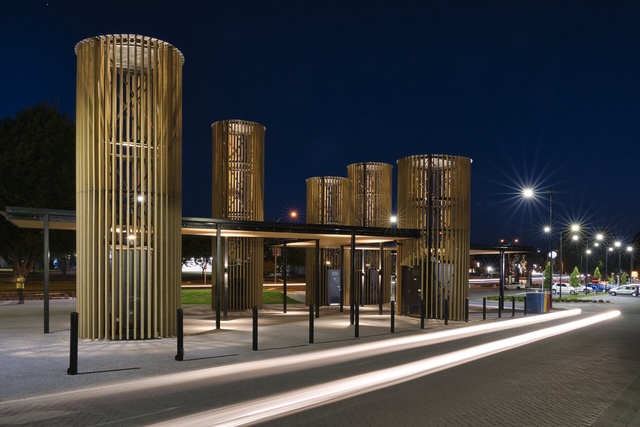
This upgrade to the Tokoroa CBD was designed to attract more visitors by providing additional car parking, a community space, a bus stop and new toilet facilities. The upgrade also incorporated the inclusion of “talking pole” artworks acknowledging the diversity of Tokoroa’s cultures. DCA Architects took the opportunity to incorporate linked sculptural timber towers inspired by, and following in plan, the Southern Cross constellation. Cylindrical timber towers form a striking addition to the townscape and the unifying canopy provides a useful shelter and community space. A carved soffit proposed for the canopy will incorporate local Māori and Pacific artwork. A welcome and well-conceived addition to the townscape.
Small Project Architecture
Elegant Sheds by Common Space

Within the pragmatic brief of a potting shed and car port, the architects have created unexpected moments of delight. Skill and care have been applied to a form that could have been dismissed as basic. Benefitting from a close understanding and trust between client and architect, these sheds are a confident expression of the tectonics of making, with resolved yet simple detailing. This is a project that successfully finds elegance in the most fundamental form of shelter.
Metal Jacket House by Jigsaw Architects
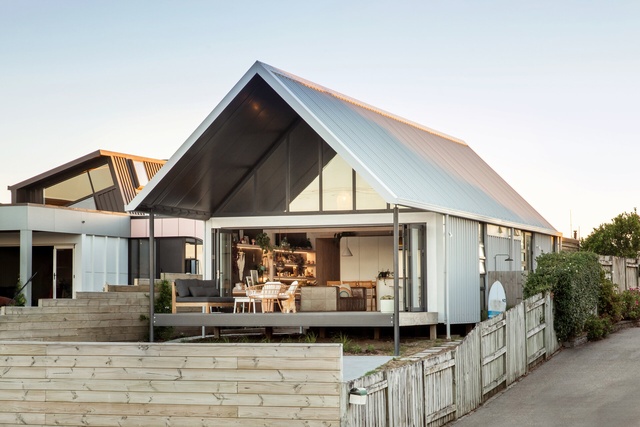
An exploration of thermal prefabricated technology, this formally simple but performance-rich project sits confidently in its beachside location. Experimental use of Structurally Insulated Panels (SIPs) is combined with a portal framework of black steel. Interiors are dark and moody but contrasted with functional timber joinery to strike a balance and allow for the occupants’ personalities to be expressed. On a tight budget, this is a home to celebrate for its brave attempt to test new building methods and materials.
Somerset Studio by John Henderson Architecture

This modernist studio in double-height, concrete tilt slab was conceived as a multifunctional extension to the owner’s restaurant. Its purpose is twofold: a luxury overnight retreat and a private dining room in which to host personalised events. Its design and functionality clearly achieve both aims. Turning its back on busy Bethlehem Road, the studio takes in a gully vista of established planting and native bird life, which can also be spied through the cleverly inserted window in the upstairs bathroom. This counterpoint is very successful in creating a restful retreat in a built-up urban environment, and its form achieves the intention of announcing itself to be “unlike any domestic neighbour”.
Karangahake House by MAKE Architects NZ
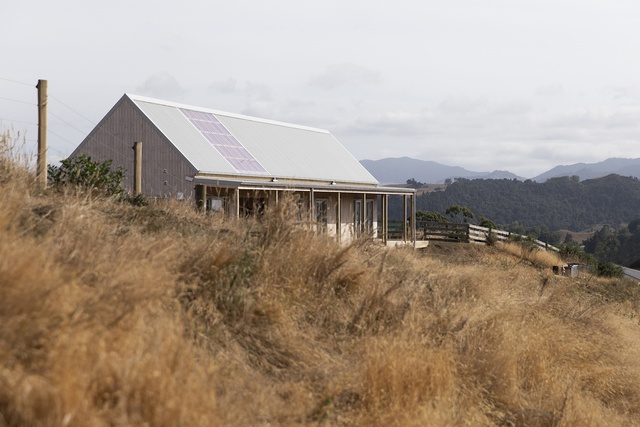
The clients wanted a simple family home inspired by a tramper’s hut that would enable them to enjoy life in the rural location they love. Make Architects’ response to the brief has achieved this with a well-planned and economical project. Steel roofing, timber cladding, prefabricated wall and ceiling panels, and cross-laminated floor and ceiling panels provided economy and speed of construction. Plywood lends a warm and contemporary yet casual feeling to the interior. A breezeway and an additional accommodation wing add a flexible space for family members, guests, or working from home.
The NZIA Local Awards programme is supported by Resene.

